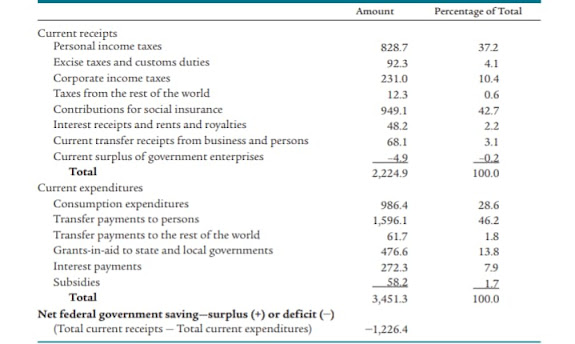Govt. and Fiscal Policy | Multiplier | CBCS
The Tax Multiplier
The Government Spending Multiplier : Increasing government spending by 50 shifts the AE function up by 50. As Y rises in response, additional consumption is generated. Overall, the equilibrium level of Y increases by 200, from 900 to 1,100.
Instead of increasing government spending (G), cut taxes and maintain the current level of spending. A tax cut increases disposable income, which is likely to lead to added consumption spending.A decrease in taxes would increase income. The government spends no less than it did before the tax cut, and households find that they have a larger after-tax (or disposable) income than they had before. This leads to an increase in consumption. Planned aggregate expenditure will increase, which will lead to inventories being lower than planned, which will lead to a rise in output. When output rises, more workers will be employed and more income will be generated, causing a second-round increase in consumption, and so on. Thus, income will increase by a multiple of the decrease in taxes, but there is a “wrinkle.” The multiplier for a change in taxes is not the same as the multiplier for a change in government spending.
Tax multiplier - The ratio of change in the equilibrium level of output to a change in taxes.
When the government increases spending, there is an immediate and direct impact on the economy’s total spending. Because G is a component of planned aggregate expenditure, an increase in G leads to a dollar-for-dollar increase in planned aggregate expenditure. When taxes are cut, there is no direct impact on spending. Taxes enter the picture only because they have an effect on the household’s disposable income, which influences household’s consumption. The marginal propensity to consume (MPC) tells us how much consumption spending changes when disposable income changes. In the example, the marginal propensity to consume out of disposable income is .75. This means that if households’ after-tax incomes rise by $1.00, they will increase their consumption not by the full $1.00, but by only $0.75.
In summary, when government spending increases by $1, planned aggregate expenditure increases initially by the full amount of the rise in G, or $1. When taxes are cut, however, the initial increase in planned aggregate expenditure is only the MPC times the change in taxes. Because the initial increase in planned aggregate expenditure is smaller for a tax cut than for a government spending increase, the final effect on the equilibrium level of income will be smaller.
We figure the size of the tax multiplier in the same way we derived the multiplier for an increase in investment and an increase in government purchases. The final change in the equilibrium level of output (income) (Y) is
Because a tax cut will cause an increase in consumption expenditures and output and a tax increase will cause a reduction in consumption expenditures and output, the tax multiplier is a negative multiplier:
If the MPC is .75, the multiplier is -.75/.25 = -3. A tax cut of 100 will increase the equilibrium level of output by -100*-3 = 300. This is very different from the effect of our government spending multiplier of 4. Under those same conditions, a 100 increase in G will increase the equilibrium level of output by 400 (100*4).
The Balanced-Budget Multiplier
It refers to the ratio of change in the equilibrium level of output to a change in government spending where the change in government spending is balanced by a change in taxes so as not to create any deficit. The balanced-budget multiplier is equal to 1: The change in Y resulting from the change in G and the equal change in T are exactly the same size as the initial change in G or T.
Returning to our example, recall that by using the government spending multiplier, a 40 increase in G would raise output at equilibrium by 160 (40*the government spending multiplier of 4). By using the tax multiplier, we know that a tax hike of 40 will reduce the equilibrium level of output by 120 (40 the tax multiplier, -3). The net effect is 160 minus 120, or 40. It should be clear then that the effect on equilibrium Y is equal to the balanced increase in G and T. In other words, the net increase in the equilibrium level of Y resulting from the change in G and the change in T are exactly the size of the initial change in G or T.










Comments
Post a Comment